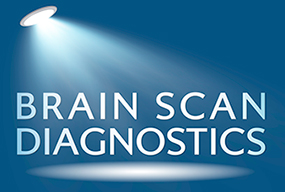About fMRI
fMRI is a non-invasive diagnostic test that provides an indirect measure of blood flow to nerve cells. When an area of the brain is in use, blood flow to that region also increases, when a brain area is less active blood flow decreases.
Functional MRI was developed in the 1990s and is being used extensively as a valuable research tool. Instead of measuring structure in the brain (as a CT scan or regular MRI does), it measures the metabolic activity of nerve cells. It does this by detecting the oxygen in the blood that is flowing to those cells. Unlike SPECT or PET scans, fMRI does not involve injection of radioactive tracers. It is completely non-invasive.
Recent developments in the application of computerized pattern recognition tools (a form of AI) have made it possible to interpret the fMRI data with a higher level of accuracy so that it is possible to scan someone and identify that their brain function is normal or abnormal.
Using fMRI, Brain Scan Diagnostics provides objective evidence of Post Concussion Syndrome (PCS) and mild to moderate Traumatic Brain Injury (mTBI).
Why is fMRI needed?
The main approach to detecting and diagnosing Traumatic brain Injury (TBI) and Post Concussion Syndrome (PCS) is through a structural MRI or CT scan, and these only rarely detect mild or moderate brain injuries. The structural testing done by MRIs and CT scans can only detect lesions down to a certain size level. For example, if there are micro-tears in the tissue this will not be seen. In addition, there may be other factors that modify brain function such as blood flow changes, neurochemical imbalances, and/or changes in neuropeptides (proteins). None of those changes will be seen by structural scans but, since these changes alter function, they are easily measured by functional MRI (fMRI).
What is the difference between MRI and fMRI?
Both fMRI and Structural MRI use the same scanning machine, but the scanner is tuned using different acquisition protocols. Structural MRI scans detect the different behavior of the hydrogen atoms forming the water molecules for different tissues like white or grey matter producing static images. fMRI scans target the same hydrogen atom in the water but detect at different times the presence or not of oxygenated hemoglobin. By focusing on oxygen density, fMRI measures the metabolic function of the cells. When a particular area of the brain is in use, blood flow to that region also increases. By looking at the regions of the brain that are working together (functional connectivity) we can see the networks of brain cells that operate continuously in our brains (brain networks) and can compare the function of those networks to those of a large group of healthy non-injured persons.
